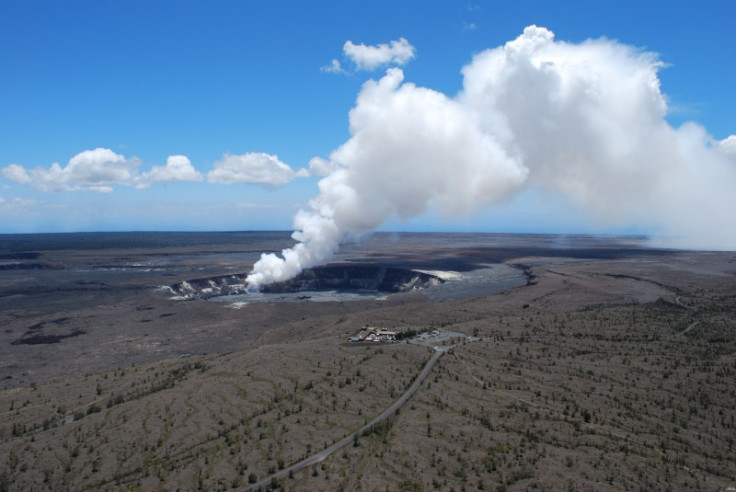Hawaii: Huge Magma Chamber Discovered Beneath World's Most Active Volcano Kilauea

A huge magma chamber has been discovered beneath Hawaii's Kilauea, the world's most active volcano.
The large, deep magma chamber was found in the largely unmapped internal plumbing of the volcano, researchers at the University of Miami Rosenstiel School of Marine and Atmospheric Science said.
The chamber was found to be several kilometres in diameter and located at a depth of between eight and 11 kilometres.
Researcher say this is the first geophysical observation that large magma chambers exist in the deeper parts of the volcano.
Kilauea is between 300,000 and 600,000 years old and is the youngest and most southeastern volcano on the Big Island of Hawaii. It stands 1,277m above sea level and has an area of 1,430m squared.
The volcano has had continuous eruptive activity since January 1983.
The scientists analysed the seismic waves travelling through the volcano to gain a better understanding of the internal structure of Kilauea. Using their data, they were able to work out the size, depth and composition of the lava chamber.
Guoqing Lin, lead author of the study, said: "It was known before that Kilauea had small, shallow magma chambers. This study is the first geophysical observation that large magma chambers exist in the deep oceanic crust below."
Researchers also found the chamber is composed of "magma mush", which is a mixture of magma and rock. The reservoir is similar to those seen beneath volcanoes at mid-ocean ridges - underwater mountain systems that have rifts formed by tectonic plates.
Falk Amelung, co-author of the paper, said: "Understanding these magma bodies are a high priority because of the hazard posed by the volcano. Kilauea volcano produces many small earthquakes and paying particular attention to new seismic activity near this body will help us to better understand where future lava eruptions will come from."
WATCH: Lava lake at Hawaii's Kilauea Volcano
© Copyright IBTimes 2025. All rights reserved.






















